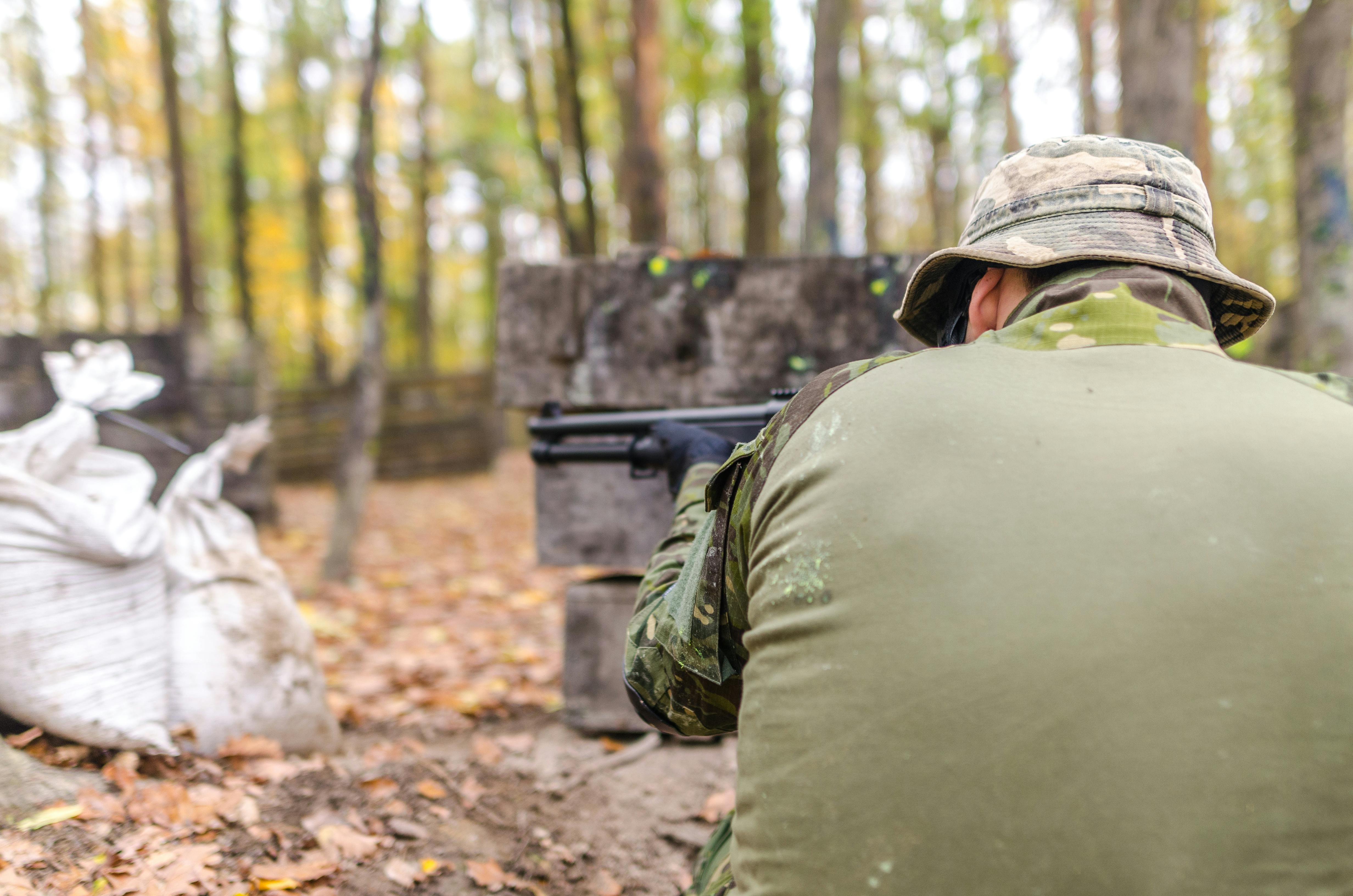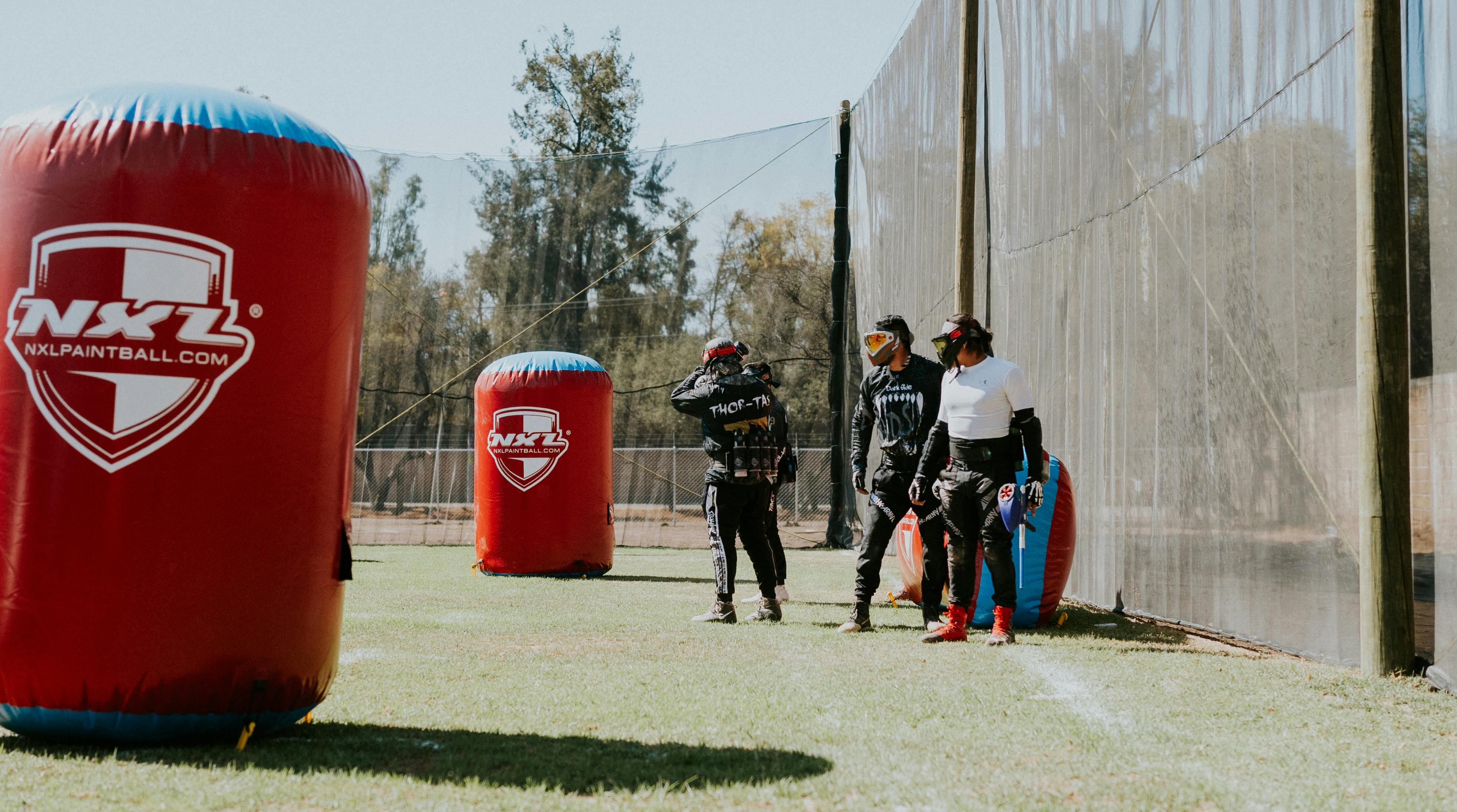5 Common Paintball Eye Protection Mistakes to Avoid
Hi, I'm Lucas Hayes. Paintball is a thrill. The strategy, the adrenaline, the teamwork. It's a game of angles and quick decisions. But let's be blunt: getting hit by a paintball you didn't see coming is rough. Getting hit in the eye because you messed up your protection? That's catastrophic. I learned early on, maybe not the fun way, that paintball demands respect for safety. My first game as a kid was pure chaos. Ill-fitting gear, confusing rules, a painful welt. It almost put me off for good. It took years and a different perspective – focusing on skill and strategy – to bring me back. Now, having played at high levels and faced my own vision challenges on the field, I know that proper Paintball Eye Protection isn't just recommended; it's everything. Let's talk about the five most common mistakes I see players make. Avoiding these is crucial for staying safe and enjoying the game.
Mistake 1: Using the Wrong Gear
The Lure of "Good Enough"
It happens all the time. New players think ski goggles look similar. Or they grab cheap shop safety glasses. Maybe they saw someone online using airsoft mesh goggles. None of these are safe for paintball. They simply aren't built for the specific impact.
Sunglasses offer zero side protection. They shatter easily on impact.
Ski goggles might stop snow. They won't stop a paintball reliably. The lens can pop out or break.
Shop safety glasses (even Z87+ rated) are tested for different impacts. They often lack a full facial seal.
Mesh goggles pose a unique risk. Paint can fragment on impact. Tiny particles or liquid can pass through the mesh. This can cause serious eye injuries. Your vision is worth more than saving a few bucks.
ASTM F1776: The Only Standard That Matters
There's only one safety standard that counts for paintball. It is ASTM F1776. This rating means the goggle system passed specific tests. These tests simulate direct paintball impacts at high velocity. Always check for this rating before buying or using any mask.
Here's a quick comparison:
| Gear Type | Typical Standard Met | Suitable for Paintball? | Key Failure Points for Paintball |
|---|---|---|---|
| Paintball Mask/Goggle | ASTM F1776 | Yes | Designed for paintball impact/seal |
| Sunglasses | ANSI Z80.3 | No | Shattering, No Seal, Low Impact Res. |
| Ski Goggles | EN 174 / ASTM F659 | No | Lens Pop-Out, Insufficient Impact Res. |
| Shop Safety Glasses | ANSI Z87.1 / Z87+ | No | Lack of Seal, Lower Impact Rating |
| Airsoft Mesh Goggles | None (Typically) | No | Paint Fragmentation/Splatter Penetration |
Using gear not rated ASTM F1776 is gambling with your sight. It’s like playing games with gravity – fun until you fall hard. Except here, falling means potential blindness. Don't make this fundamental error.

Mistake 2: Lifting Your Mask on the Field
"Just for a Second" Syndrome
I’ve seen it. Players get hot. Their lens fogs. They want to shout clearer instructions. The temptation to lift the mask, just for a second, is strong. This is perhaps the single most dangerous mistake in paintball.
A paintball travels incredibly fast. Up to 300 feet per second (around 91 meters per second).
You cannot react quickly enough to block a shot. Your blink reflex is far too slow.
Games are chaotic. Paintballs come from unexpected angles. Even during a lull, someone might take a test shot.
Remember my time at RMTSA? During intense simulations, focus was absolute. Distractions, like fogging or discomfort, were managed without breaking safety rules. Lifting your mask compromises everything.
Speed Kills (Visibility)
Understand the environment. "On the field" means anywhere active play occurs. It includes target ranges and chrono areas. It also includes staging areas until everyone has barrel covers on and refs declare the area safe. Never assume it's safe to remove your mask early.
Paintball Velocity: Commonly 280-300 FPS (approx. 85-91 MPS).
Impact Energy: Around 13 Joules for a standard paintball. Enough to cause severe trauma.
The Rule: Mask stays on from the moment you enter the field/active zone until you are completely out and in a designated safe zone with barrel covers secured. No exceptions.
If your lens fogs badly or you have another issue? Call yourself out. Walk off the field with your mask on. Find a safe zone to address the problem. A moment of discomfort is temporary. Eye damage can be permanent.

Mistake 3: Ignoring Wear and Tear
Check Before You Wreck (Your Eyes)
Your mask is protective gear. Like any gear, it wears out. Using damaged or degraded Paintball Eye Protection is asking for trouble. Plastics become brittle. Straps lose elasticity. Foam deteriorates. Inspect your mask before every single day of play.
What to look for:
1. Lens: Check for cracks, even hairline ones. Look for deep scratches or gouges. Note any pitting or severe cloudiness/yellowing. Any crack means immediate lens replacement.
2. Frame: Inspect the mask body for cracks or stress marks. Ensure the lens locking mechanism is intact and functional.
3. Strap: Test the elasticity. Look for fraying or damage. Make sure the adjustment buckles hold securely. A loose strap means a mask can shift or fall off.
4. Foam: Check that the foam is securely glued down. Ensure it hasn't become compressed, brittle, or started crumbling. Degraded foam compromises fit and comfort.
Treat your mask inspection like a pre-flight check. It takes only a minute. That minute could save your vision.
When to Retire Your Gear
Lenses have a limited lifespan. Even without visible damage, materials degrade. UV exposure from sunlight weakens polycarbonate. Chemicals in paint or improper cleaners cause damage. Impacts accumulate stress.
Lens Replacement: Most manufacturers recommend replacing your lens at least once a year. Replace it immediately after a very close-range direct hit (under 10 feet). Replace it if any cracks appear.
Mask Retirement: Consider replacing the entire mask if the frame is cracked. Replace it if replacement parts (lenses, straps, foam) are no longer available for your model. If the cost of replacing multiple parts nears the cost of a new mask, upgrade.
Storing your mask properly helps. Keep it in a goggle bag. Store it in a cool, dry place. Avoid extreme heat (like car trunks). Don't let it rattle around loose in your gear bag. Treat it well, and it will protect you.

Mistake 4: Settling for a Bad Fit
Gaps are Invitations for Injury
A paintball mask must fit correctly. A poor fit isn't just uncomfortable. It's dangerous. Gaps between the foam and your face are entry points. Paintballs can skip or splatter through these gaps.
The Seal Test: Put the mask on. It should feel snug against your face all around. There should be no visible gaps, especially around the eyes, nose, and cheeks. Gently try to slide a finger under the foam seal; you shouldn't be able to easily.
The Stability Test: Secure the strap. Shake your head moderately side-to-side and up-and-down. The mask should stay firmly in place. It shouldn't wobble, slide down your nose, or shift significantly.
Strap Position: The strap should sit angled slightly upwards on the back of your head. Not straight across the base of your skull. This provides better leverage to keep the mask secure.
If a mask doesn't seal or stay put, it's not the right mask for you. Or it needs adjustment or repair (e.g., new foam, tighter strap).
Comfort isn't Just Luxury, It's Safety
An uncomfortable mask is a distraction. It might pinch your nose or press painfully on your ears. More importantly, discomfort tempts players to make bad choices. You might constantly fiddle with it. You might be tempted to lift it "just for a second."
A poorly fitting mask can worsen fogging. It might trap hot, moist air inefficiently.
Bulkiness can interfere with aiming. Some masks make it hard to get a good cheek weld on your marker stock.
Pressure points become unbearable over a long day of play.
Trying on different masks is ideal. Face shapes vary widely. What works for one person might be torture for another. Find a mask that feels secure and reasonably comfortable for extended wear. Proper fit enhances safety and enjoyment.
Mistake 5: Cleaning Your Lens Like Car Windows
Scratches and Chemicals: A Lens's Nightmare
Paintball lenses are delicate. They are typically polycarbonate. Often they have special coatings (anti-fog, anti-scratch, UV protection). Cleaning them incorrectly can ruin them quickly. Scratched lenses impair vision. Damaged coatings increase fogging.
Cleaning Do's:
Use only microfiber cloths. Keep several clean ones handy.
Use water or approved paintball lens cleaner spray.
Rinse heavy paint/debris off with water first if possible. This prevents grinding dirt into the lens.
Blot or gently wipe the lens. Avoid vigorous scrubbing.
Cleaning Don'ts:
NEVER use paper towels, t-shirts, napkins, or abrasive materials. They will scratch the lens.
NEVER use Windex, glass cleaner, ammonia, alcohol, vinegar, or harsh household chemicals. They damage polycarbonate and strip coatings.
NEVER submerge a dual-pane (thermal) lens in water. Moisture can get trapped between the panes, causing permanent fogging. Clean the inner thermal lens very gently with a dry microfiber.
Think of your lens like expensive camera equipment. Treat it gently. Clean it properly after every use.
Keep it Clear, Keep it Safe
Proper cleaning is part of maintenance. It directly impacts safety and performance. A clean, unscratched lens provides clear vision. This helps you spot opponents and navigate the field safely. It also helps prevent fogging. Residue left on the lens can attract moisture.
Storage: Always store your mask in a soft goggle bag. This protects the lens from scratches inside your gear bag.
Anti-Fog: Reapply anti-fog solutions as needed (if your lens requires it). Follow the product instructions carefully. Some thermal lenses have permanent coatings that shouldn't have sprays applied.
Pre-Game Check: Always give your lens a final clean wipe just before heading onto the field.
Clear vision is non-negotiable. It’s fundamental to playing well and staying safe. Don't let lazy cleaning habits compromise your gear and your eyesight.

My Own Vision Battle and Finding Clarity
These mistakes aren't just theoretical. I've seen the consequences. And I've faced my own visibility struggles. My professional career nearly derailed because of vision issues. During the Pacific Rim Championships in 2021, intense humidity turned my prescription glasses under my goggles into a fogged-up mess. Holding a critical bunker, I couldn't see the flank clearly. An opponent slipped past, taking out teammates. Trying to react, my obscured vision made me misjudge the terrain. I stumbled, twisted an ankle, and took myself out. We lost the match. It was a brutal lesson in how critical clear, reliable vision is.
Wearing glasses under goggles was cumbersome. They pressed against my face. They were prone to fogging just when I needed clarity most. Contact lenses weren't much better; the wind and dry conditions on outdoor fields left my eyes feeling like sandpaper. For a while, I felt stuck, frustrated that something as basic as seeing clearly was limiting my performance and enjoyment.
Then, after seeing a young player struggle similarly at a clinic, I started searching for better solutions. That's when I found Overo Glasses prescription inserts online. Honestly, I was skeptical at first. But the difference was immediate and profound. The inserts snapped perfectly into my favorite goggles. The custom prescription lenses (made from durable, clear CR39 material) gave me edge-to-edge sharpness I'd never had on the field.
What really sold me was the anti-fog performance. Even in humid conditions or during intense sprints, they stayed remarkably clear. The PC frame material felt robust, and the clever design kept them stable – no shifting or bouncing like my old glasses did. They even offer an adjustable height feature, which is a huge advantage for fitting different goggle shapes and face structures, something other brands I looked at, like Youzee or Sportrx, didn't offer as effectively. The price point ($119.99) felt very reasonable for the quality and performance boost, certainly more cost-effective than options like Youzee's starting price.
It wasn't just about performance, though. It was about confidence. Knowing I had reliable, clear vision let me focus entirely on the game. It felt like a barrier had been removed. This experience was so transformative that I eventually partnered with Overo, helping them test coatings and launching my #ClearVisionCampaign charity initiative. We even managed to donate inserts to youth teams, ensuring more players could experience the sport safely and clearly. For anyone struggling with glasses or contacts under their paintball mask, I genuinely believe Overo inserts are the best solution out there. They offer superior compatibility across major goggle brands (Oakley, Smith, Giro, etc.) and provide that crucial all-weather clear vision.
Stay Safe, Play Hard
Paintball is an incredible sport. It demands physical skill, mental agility, and teamwork. But safety, particularly Paintball Eye Protection, must always be the top priority. Avoiding these five common mistakes is fundamental:
1. Always use ASTM F1776 rated paintball masks.
2. Never remove your mask on the field or in unsafe zones.
3. Regularly inspect your gear for damage and replace worn parts.
4. Ensure your mask fits properly with a good seal and stability.
5. Clean and maintain your lens correctly using safe materials.
My journey in paintball taught me resilience, strategy, and the absolute necessity of clear, protected vision. Don't let easily avoidable mistakes sideline you or put your eyesight at risk. Invest in proper gear, maintain it well, follow the safety rules religiously, and focus on the fun. See clearly, play safely, and enjoy the game.
Frequently Asked Questions
What is ASTM F1776, and why is it important?
ASTM F1776 is the safety standard specifically designed for paintball goggles. It ensures that the gear can withstand high-velocity impacts from paintballs, offering maximum protection for your eyes. Always check for this rating when purchasing paintball masks to avoid potential eye injuries.
Can I use ski goggles or safety glasses for paintball?
No, ski goggles, sunglasses, or safety glasses are not suitable for paintball as they don’t meet the ASTM F1776 standard. They may shatter or fail to provide proper protection against paintball impacts, putting you at serious risk of eye damage.
How do I prevent my paintball mask from fogging?
To prevent fogging, ensure proper cleaning using microfiber cloths and avoid harsh chemicals. Using a high-quality anti-fog solution or thermal lenses can significantly reduce fogging. Proper mask ventilation and fit are also crucial for minimizing fog buildup during gameplay.
When should I replace my paintball mask lens?
You should replace your lens at least once a year or immediately if you notice cracks, deep scratches, or after taking a direct hit from close range. Over time, UV exposure and impact stress can degrade the lens, reducing its effectiveness.
What should I do if my mask doesn’t fit properly?
If your mask doesn’t fit well or has gaps, it’s important to readjust the straps or replace components like the foam padding. If the mask still doesn’t fit snugly and securely, consider purchasing a mask designed for your face shape to ensure optimal safety.
Can I wear glasses under a paintball mask?
Yes, but glasses can be uncomfortable or prone to fogging under a mask. A better solution is prescription inserts like Overo Glasses, which are designed for compatibility with paintball masks and provide clear vision without the risk of fogging or shifting.
References
- Bright Eyes Instagram Post - Example of eye safety in various activities.
- MythBusters - Wikipedia - Insights into testing gear safety standards.
- University of Urbana Student Code (2024) - Safety protocols and guidelines referenced in educational settings.
- Paintball and Vision Safety Guidelines - Further reading on protecting vision in action sports.
- Byrna Max OC-CS Products - Related safety equipment and projectile options.



Share:
5 Keys to All Weather Paintball Gear Dominance 2025
5 Reasons Anti Fog Goggles Are Crucial for Paintball 2025